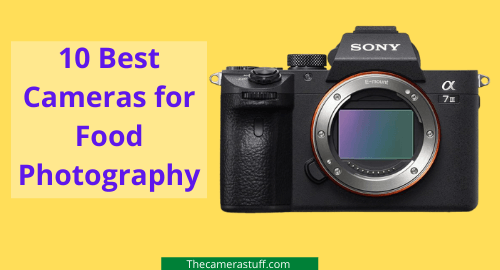Producing a professional-looking presentation for your food might be difficult. Some cuisine can be a delectable delight but conveying it in a photograph is not always straightforward. Inadequate lighting, shaky camera angles, and improper equipment can all lead to disappointing outcomes.
That’s where our list comes into aid – at least, with the final thing on our checklist. A broad range of various cameras and kinds have been chosen for this article, each of which is suited for food photography in some form or another.
Let us assure you our collection has something to offer everyone. Whether you’re an amateur photographer, a novice trying to progress, or a seasoned pro, we have got you covered! Deciding on the Best Camera for Food Photography is not always as straightforward as choosing one of the best mirrorless cameras, the best DSLR cameras, or the best compact cameras.
Although the cameras included in those recommendations are excellent, they are often all-rounders that perform well in various situations. Thus, we will guide you thoroughly on what you can do and what features will enhance your food photography. Let’s get started!
Comparison Chart 10 Picked Cameras
| Image | Product | Detail | Price |
|---|---|---|---|
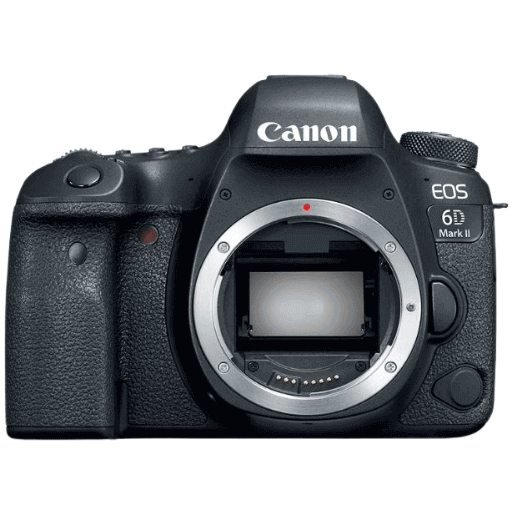 | Canon EOS 6D Mark II |
| Check Price |
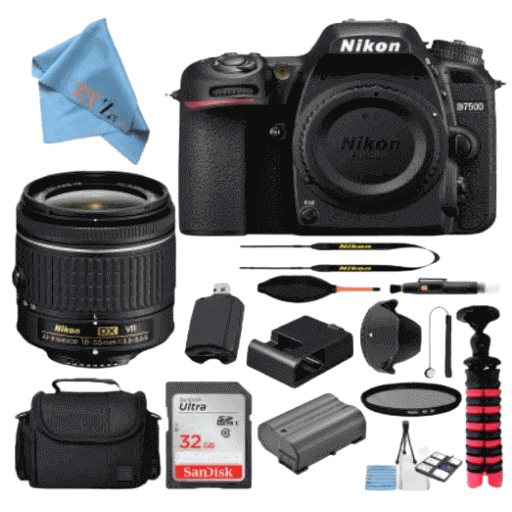 | Nikon D7500 |
| Check Price |
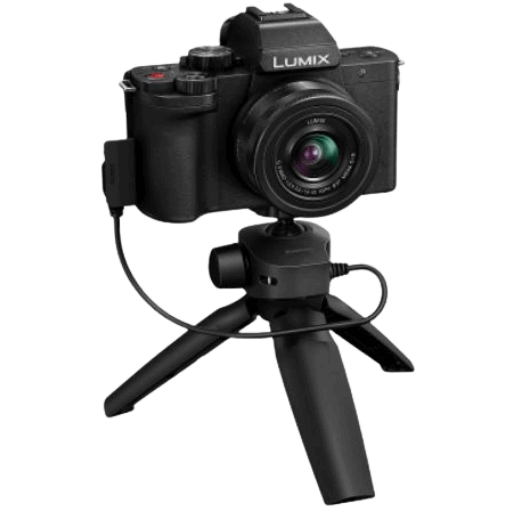 | Panasonic LUMIX G100 |
| Check Price |
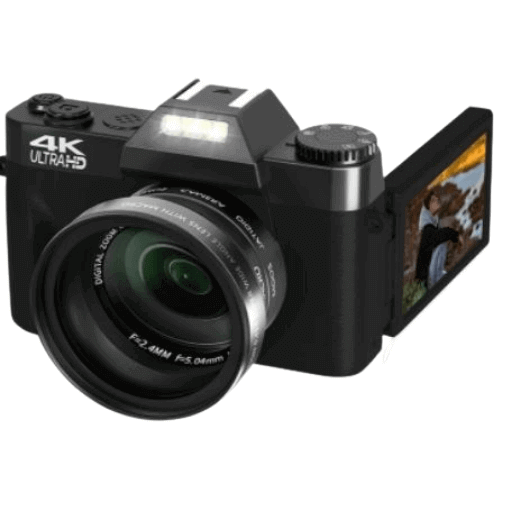 | VJIANGER 4K Digital Camera |
| Check Price |
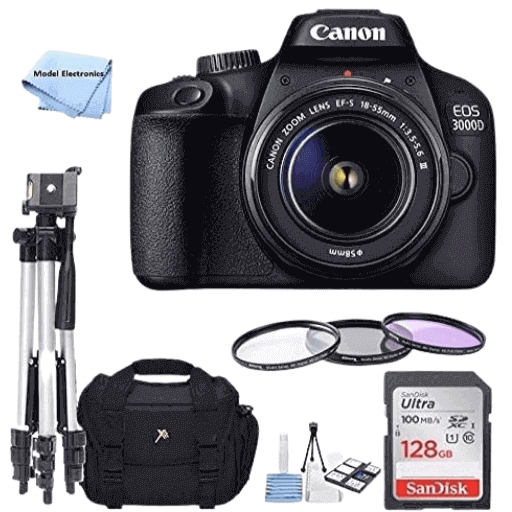 | EOS 3000D / Rebel T100 DSLR Camera |
| Check Price |
 | Canon EOS 5D Mark IV |
| Check Price |
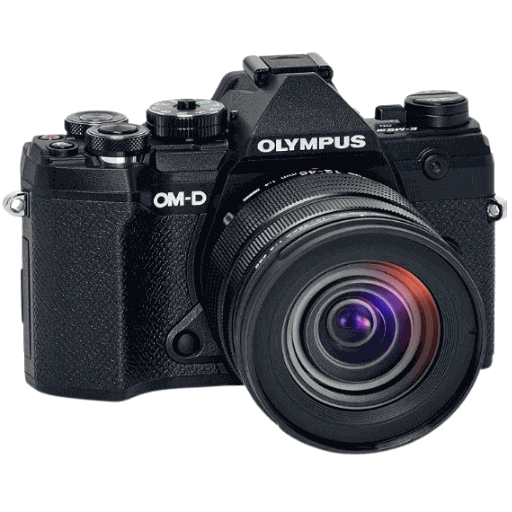 | OLYMPUS OM-D-E-M5 Mark III |
| Check Price |
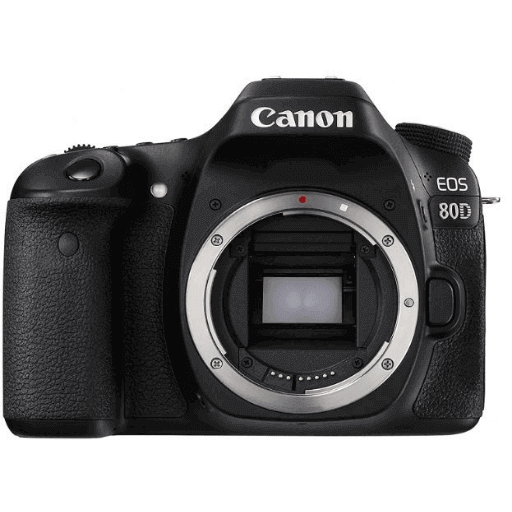 | Canon Digital SLR Camera |
| Check Price |
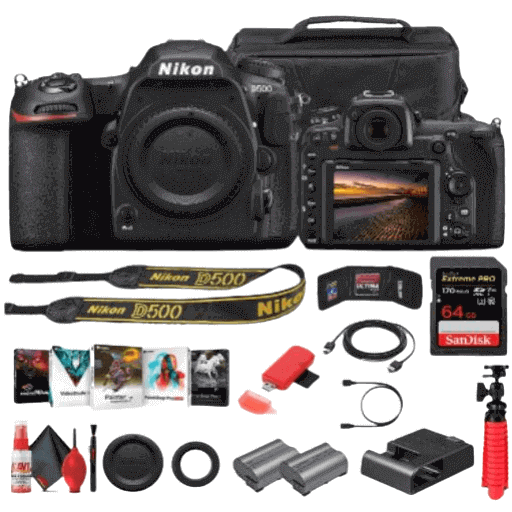 | Nikon D500 DSLR Camera |
| Check Price |
 | Sony a7 II ILCEM7M3 |
| Check Price |
1. Canon EOS 6D Mark II

- CMOS sensor with a resolution of 26.2 Megapixels (full-frame).
- An optical viewfinder with a 45-point all-cross-type autofocus mechanism is included.
- Canon EF lenses are compatible with this camera.
- Dual-pixel CMOS AF with phase detection and Full HD 60p is included in the package.
- Touch screen with variable angle, 3.0-inch LCD.
Canon’s newest full-frame DSLR, the EOS 6D Mark II, is targeted at experienced amateurs and enthusiasts, and professionals searching for a second Canon DSLR body. Its all-new 26MP sensor has Dual Pixel technology for precise focusing during live view photography, and it gets the crop-sensor EOS 80D’s 45-point autofocus system for viewfinder shooting.
A thoroughly articulating touchscreen, built-in WiFi and GPS, and burst shooting at 6.5 frames per second round out the package. Coming to market more than five years after its predecessor, it should come as no surprise that the 6D Mark II improves on it in nearly every aspect. The resolution, focusing performance, burst shooting speed, video recording, and battery life have all been enhanced.
The original EOS 6D and Nikon’s D600 pioneered the concept of an ‘entry-level’ full-frame camera, whose genuine worth rested in the size of the sensor, with a relatively pared-down feature set and body around it.
The EOS 6D Mark II unapologetically follows in the footsteps of its predecessors. Its impressive 26MP full-frame sensor is housed in a very plasticky (but still weather-sealed) shell. It makes certain concessions compared to its full-frame Canon kin – we should emphasize, however, that this is to be anticipated considering its significant $1300 reduction over the 5D Mark IV.
Our Recommendation
The Canon EOS 6D Mark II is a classic DSLR. Is it incredibly enthralling? The 6D Mark II, on the other hand, is a robust, well-built camera capable of generating beautiful photographs while outperforming its predecessor in virtually every quantifiable measure.
Pros
- Awesome color spectrum
- An easy-to-use touch LCD screen
- Excellent battery life
Cons
- Small AF coverage area
2. Nikon D7500

- Nikon’s D7500 DSLR Camera has a robust 20.9 Megapixel sensor.
- Nikon D7500 is compatible with 4K UHD video picture format.
- The Nikon D7500 Camera has an excellent focusing mechanism with 51 different points.
- It’s designed to work with Nikon’s new high-resolution DX-format picture sensors.
- The camera communicates with each other using BLE (Bluetooth Low Energy) and WiFi.
To begin, one of the best cameras for food doesn’t offer any separate ISO button, which is intended to simplify things, but that doesn’t mean the functionality isn’t top-notch. This function is automated in the camera, making food photography a lot simpler for you to do.
Secondly, there are no touchscreens available on the camera itself. However, although a touchscreen seems to be a fun and innovative feature, it makes the camera less robust and needs more frequent maintenance. So if you’re searching for a food photography camera that will endure for a long time, this is the camera to acquire for your money!
One of the other advantages of this camera that we like is connecting through a Bluetooth snap bridge. This Nikon D7500 lets you quickly and easily connect the camera to a wide range of accessories. The Nikon D7500 Camera has an excellent focusing mechanism with 51 different points. That is something the famous Nikon 3500 doesn’t offer.
This food photography camera is equipped with WiFi networking capabilities to make it even easier to stay connected. It makes transferring photographs, regardless of their file size, much simpler for you to do. The camera has a resolution of 20.9-megapixels and does not include an optical pass filter when it comes to picture quality. As a result, every photograph your snap will be colorful and clear.
This camera is made of scratch-resistant polycarbonate that is both durable and lightweight. This camera is resistant to staining and damage, making it the finest choice for food photography applications. Also noteworthy is the camera’s ISO sensor, which is extremely large. It has a long battery life, making it convenient to bring along with you.
Our Recommendation
The fact that this Nikon D7500 camera is so user-friendly is one of the reasons it has earned a spot on our list. This camera has everything you need to be the finest food photography camera in the town, and it does it with style.
Pros
- Excellent battery life
- Durable polycarbonate structure
- Good connectivity options
Cons
- The charger needs to be replaced quite often
3. Panasonic LUMIX G100

- It photographs brief moments in crystal-clear 4K resolution.
- The camera is easy to use and lightweight, and it interacts easily with smartphones.
- Connect the G100 to your computer easily so that you can make online calls.
- With 360-degree sound, it’s small and light.
- A helpful frame marker for determining aspect ratios on social networking (1:1, 4:5, 5:4 and 9:16, and more).
The G100 is a 20MP Micro Four Thirds mirrorless camera created specifically for vloggers and video makers. It has a ‘tracking’ audio system that works in tandem with the camera’s facial recognition technology and a flip-out screen that, by default, activates numerous simple settings. The G100 is available in several packages, one of which includes a compact tabletop tripod/selfie grip.
The G100’s directional audio modes are its most distinguishing feature. These include technologies licensed from Nokia’s ‘OZO’ VR project and a variety of methods to use the camera’s three built-in microphones. The microphones include a front, back, or surround pickup pattern and a ‘tracking’ mode that alters the mic response direction depending on the camera’s face identification technology.
In Self Shot mode, the camera applies a three-second self-timer to both stills and video recording. Touch Shutter is activated. However there are additional choices available, such as firing the shutter when two faces are put adjacent to one another. The LUMIX G100 offers 4k resolution, unlike its counterpart, the LUMIX S5.
The G100 has an electronic first curtain shutter, restricting flash sync speed to 1/50th second. This restricts the ability to utilize the camera’s built-in flash as ‘fill’ to fill in shadows.
Our Recommendation
The G100 is an astonishingly compact camera, owing as much to Panasonic’s GM range as its contemporary models. The camera feels substantial and securely made in hand without being too weighty.
Pros
- DSLR-style grip
- Large viewfinder
- A good degree of customization on offer
Cons
- The battery isn’t the best
4. VJIANGER 4K Digital Camera

- The 4K digital camera has a video resolution of 30 frames per second and a still image resolution of 48MP.
- It can be utilized as a PC camera by connecting the camera to the computer through a USB connection.
- An external microphone with a 3.5mm connection can be connected to the camcorder.
- This camcorder supports the pause feature.
- With dimensions of 5*3*2(IN), this digital camera is very lightweight and portable.
The VJIANGER 4K digital camera has a 30fps video resolution and 48MP pixels, making it a smoother shooting experience than 2.7K or 1080P cameras. This is something that the KODAK PIXPRO Astro Zoom lacks.
The vlogging camera has a wide-angle and macro camcorder lenses. It enables 16X Digital Zoom (Autofocus) to achieve tighter focus from a distance and shoot close-up shots with precise details, as well as record a more extensive variety of surroundings.
The camera can be used as a PC camera by connecting it to a PC via a USB connection and selecting “Camera mode” to enjoy video chatting on Skype or live streaming on social media platforms like Facebook and YouTube. The camcorder accepts an external microphone with a 3.5mm connection for quality audio recording, has a hot shoe for attaching an external fill light, and an external 1/4 standard size tripod.
Autofocus is supported by the vlogging camera camcorder (AF). Whether in video or camera mode, gently push the camera button until the focusing logo frame appears on display. Allow the camera to focus on catching your subject when you wish. From daily life to sports and nature, you will obtain the ideal photo in every setting.
This 4K camcorder has a Halt feature, which allows you to pause the recording and resume from where you left off without creating a new file, making it simpler to edit the recordings.
Our Recommendation
The simple and easy operation makes it an excellent camera gift for beginners, kids, teenagers, students, and the elderly to snap photographs and shoot, as well as a fantastic present for your family, friends, and leaders for festivals, sporting events, weddings, parties, and key occasions.
Pros
- Excellent high-quality images
- Incredible with vlogging
- Offers customization
Cons
- Not made for beginners
5. EOS 3000D

- The camera is equipped with an 18.0MP APS-C CMOS sensor.
- In addition, it has a DIGIC 4+ Image Processor.
- With Scene Intelligent Auto, all you have to do is a frame and shoot for fantastic results.
- It also includes an Electronic Viewfinder for capturing images.
- With Creative Auto mode, you can take advantage of guided Live View photography.
The EOS 4000D has an APS-C sensor, a 9-point autofocus system with a single cross-type point, Full HD video recording at 3fps, an ISO range of 100-6400 (expandable to ISO 12,800), and a fixed (non-articulating) back screen. The specifications are simple yet sufficient for novices in DSLR photography.
In contrast to the 24.1MP EOS 2000D, Canon has chosen an 18MP APS-C sensor for this model. The EOS 4000D’s back screen is similarly 2.7in size and has a fundamental 230k-dot resolution, as opposed to its sibling’s 3in 920k-dot screen.
The camera features WiFi but no NFC, and although it can take infinite JPEGs, it can only record six Raw files in a burst. It comes with an 18-55mm III kit lens that lacks image stabilization and does not use Canon’s silent USM or STM autofocus motors.
Overall, the controls are simple yet effective. Canon has always made its entry-level DSLRs seem easy on the surface while also providing enough direct access to camera settings and features to keep up with users as their abilities and technical knowledge grow.
Our Recommendation
Everyone likes a good deal, and there’s no disputing that the EOS 4000D is excellent. We anticipate the 4000D’s price to reduce overtime to canbe the lowest point ever for a Canon DSLR, but there is a catch. Canon has resorted to rather ancient technology, low-spec autofocus, and inexpensive kit lenses to attain this pricing.
Pros
- Solid build
- Ergonomic in style
- Excellent for long-hours photography
Cons
- Doesn’t offer continuous autofocus
6. Canon EOS 5D Mark IV

- A new full-frame CMOS sensor with 30.4 Megapixels is available for diverse shooting.
- 4K Motion JPEG video (DCI cinema-type resolution of 4096 x 2160 pixels) at 30p or 24p is available.
- You can use the EOS utility webcam beta program to take photos and videos.
- Excellent performance, with a continuous shooting speed of up to 7.0 frames per second.
- The LCD is equipped with a complete touchscreen interface.
The Canon EOS 5D Mark IV is always poised to catch the ideal shot for my next culinary photography project. Autofocusing is reasonably quick in various lighting conditions, including low light.
It didn’t matter what sort of lighting we used, and focusing was practically instant in solid light but took somewhat longer in low light. To make the camera more sensitive in low-light circumstances, we captured food textures while increasing the sensitivity to -3EV. All 61 AF points can converge at f/8 is excellent news for food photographers.
The new DIGIC 6+ image processor was quicker than the last DSLR I used to start up, evaluate food images, and reduce noise in high-ISO shots at 30.4MP, which is much better than the 26.2MP CMOS Sensor that the Canon EOS 6D offers.
While on our way to frame food decors, we observed much speedier picture processing of the foody dwelling. We needed a fast shutter speed to keep up with the fast-moving curtains; 1/8000, a much faster shutter speed, creates a razor-sharp effect when the camera is set at an awkward angle on a tripod.
Canon’s anti-flicker technology determines the frequency and degree of flicker in a light source. The eerie sheen that pours over beautifully patterned food as the sun sets low in the sky never fails to capture me, and I believe this is the Best Camera for Food Photography we’ve ever used. When shooting the meal, the camera’s anti-ghosting functions assisted in preventing visual distortion.
Our Recommendation
This camera builds on the acclaimed 5D series’ reputation for excellent picture quality, efficiency, and adaptability. Thanks to built-in WiFi, GPS, and a feature-rich touch-panel LCD, the camera can become an extension of myself.
The Canon 5D Mark IV is the most excellent professional camera for food photography. Anyone who wants to produce a tremendous effect on a varied assortment of well-textured food simply by walking around the food streets.
Pros
- Excellent autofocus
- Perfect ergonomics
- WiFi module
Cons
- Non-ISO sensitivity
7. OLYMPUS OM-D-E-M5 Mark III

- It comes with a 20-megapixel camera that allows you to capture high-quality pictures and videos
- It helps you prevent fuzzy shots even while shooting in low light due to its 5-axis image stabilization technology
- It offers a variety of automated settings and capabilities for beginning photographers
- It features 121 AF points for capturing tack-sharp shots in Live View
- It has 4x optical zooming to help you zoom in and out while retaining the picture quality
With a 20-megapixel sensor, the Olympus OM-D E-M5 Mark III is a small and lightweight Micro Four Thirds mirrorless camera ideal for embarking on a street food adventure, working in a small kitchen, or photography in the studio.
You can prevent fuzzy shots even while shooting in low light without a tripod thanks to the in-body 5-axis image stabilization technology, and the tillable touchscreen makes the camera highly intuitive for those who have previously used a smartphone as their primary photographic tool.
OLYMPUS OM-D-E-M5 features 4x optical zooming that helps you zoom in on the pictures while retaining the quality, making it better than the previous OLYMPUS E-M10. Moreover, this model comes with an LCD viewfinder, not featured in the model mentioned above.
In addition, the E-M10 Mark III offers a variety of automated settings and capabilities for beginning photographers and 121 AF points for capturing tack-sharp shots in Live View or via the viewfinder.
Our Recommendation
According to our estimations, OLYMPUS OM-D-E-M5 is the perfect camera for food photography because of its high-quality features. With 5-axis image stabilization and 20-megapixel, you’re all set with this camera.
Pros
- Perfect Ergonomics
- Great dynamic range
- Increased Autofocus
Cons
- Non-ISO sensitivity
8. Canon Digital SLR Camera

- It enables you to snap an action shot from a different perspective by arranging the layout
- It comes with an Intelligent Viewfinder that shows AF points and AF mode
- It provides minimal luminance performance to EV 3 and 4 kinds of AF area selection modes for next-level AF operation
- It allows you to capture the shot in Live View mode with a speed of 7fps
- It features a 24.2-megapixel camera to take high-resolution pictures
This food camera is an attractive option for a competent photographer who shoots ice cream photography for advertising and a beginner who shoots flat lay food shots for Instagram and wants to shoot in JPEG with the Live View screen.
Canon 80D enables you to snap an action shot from a different perspective by arranging the layout on display with continuous autofocus in Live View mode and a Dual Pixel CMOS system with a speed of 7 frames per second, making it better than the Canon EOS Rebel SL3.
Aside from its ease of use, this novice camera may be perfect for persons who aspire to become sports shooters. The Intelligent Viewfinder shows AF points and AF mode, a grid display, a diagonal electronic level, and a plethora of additional information.
The EOS 80D camera boasts a broad area, 45 points, all cross-type AF performance with minimal luminance performance to EV 3 and 4 kinds of AF area selection modes for next-level AF operation. The 24.2 Megapixel (APS C) CMOS sensor takes high-resolution photographs and has finely tuned individual pixels that allow for high ISO rates.
Our Recommendation
The Canon EOS 80D is an economical choice for buying a camera for food photography. It stabilizes the image using built-in image stabilization, a plus-point with all its unique features.
Pros
- 24.2-megapixel
- 7fps frame rate
- Integrated Wifi
Cons
- Limited RAW buffer size
9. Nikon D500 DSLR Camera

- It caters to both still and video shooters, thanks to its 20.9MP CMOS sensor
- It has a natural sensitivity range of up to ISO 51200 for working in low-light environments
- It features a vast Multi-CAM 20K 153-point AF system, which contains 99 cross-type points for rapid performance
- You can capture the frame at a 10-fps constant pace and do a 4K UHD video recording
- It comes with an EXPEED 5 image processor to give a desirable high sensitivity
The D500, as the top model in Nikon’s DX-format DSLR series, is distinguished by its sturdy physical construction, competent image capabilities, and, of course, a more compact, streamlined form factor than its FX counterparts. With its quick 10-fps constant pace and 4K UHD video recording capabilities, this camera caters to both still and video shooters, thanks to its 20.9MP CMOS sensor and EXPEED 5 image processor.
The sensor and processor also work together to provide a natural sensitivity range of up to ISO 51200 for working in low-light environments. The D500’s vast Multi-CAM 20K 153-point AF system, which contains 99 cross-type points for rapid performance and precise subject tracking capabilities, contributes to its fast shooting performance. The D500 is far from lacking in terms of utility and adaptability.
The D500 20.9MP CMOS sensor is combined with the EXPEED 5 image processor to give a high sensitivity, detailed picture quality, and quick overall performance. A sensitivity range of ISO 100-51200 at native values allows for working in various lighting circumstances and can be increased to ISO 50-1640000 (Low 1 to Hi 5) to tackle the most difficult of scenarios.
Moreover, the 20.9-megapixel camera of the Nikon D500 features optical sensor stabilization, which was not present previously in the Nikon D500 DX-format.
Our Recommendation
Place it on a tripod base or another flat surface, and it will rotate to keep you in the frame while you walk about in front of it. Despite the larger sensor, the Nikon D500 remains the best camera for food photography 2022 in low-light or high-contrast situations. We suggest purchasing this one!
Pros
- CMOS sensor
- High-resolution output
- Good low-light performance
Cons
- No optical zooming
10. Sony a7 II ILCEM7M3

- It comes with a touch screen and a sensor with a resolution of 24 megapixels
- It includes 423 contrast-detection points and 693 phase-detection points
- It provides up to 93% of Autofocus coverage to capture good shots
- Every pixel on the screen of this camera has a focusing point
- You can capture the video up to 2k UHD resolution using this camera
Even though the Sony A7 Mark III is considered a basic full-frame camera, it is one of the finest cameras for food photography available. Several helpful features include excellent resolution, amazing picture quality, and many good choices. It also has a touch screen and a sensor with a resolution of 24 megapixels.
Aside from that, this camera includes 423 contrast-detection points and 693 phase-detection points, providing 93 percent AF coverage. These Autofocus points make it better than the previous Sony a7 II.
Each pixel on the screen has a focusing point. Someone who works as a professional food photographer would undoubtedly appreciate it. The autofocus technology was derived from Sony’s top-of-the-line A9 pro sports model. Furthermore, this camera is one of the most effective low-light cameras available.
Our Recommendation
Nikon’s masterpiece combines a tiny size, quick focusing, and a tilting touch screen to create an excellent camera. It is suitable for beginners who wish to capture their meals.
Pros
- 24 megapixels
- Versatile RAW files
- Attractive color rendition
Cons
- No battery charger
Conclusion
We hope that this collection has assisted you in your search for the Best Camera for Food Photography. Now that you’re aware of the several excellent possibilities available to you, the key is to choose what you want to capture and which exact characteristics you want.
What kind of food photography camera do you intend to purchase? Which one is your personal favorite? Please let us know what you think!
